Planning
While backyard habitats cannot take the place of large wilderness areas, they can foster the diversity of wildlife populations in urban areas.
Consider the number and kinds of plants or animals living in or on a typical suburban lot. Basically you’ll find lots of individuals — many blades of grass, several individuals of the same plant growing in a hedge, large populations of aphids or mites — but you won’t find many different species. Now compare that with what you would find living in an abandoned lot or field, and you will get an idea of what diversity is all about.
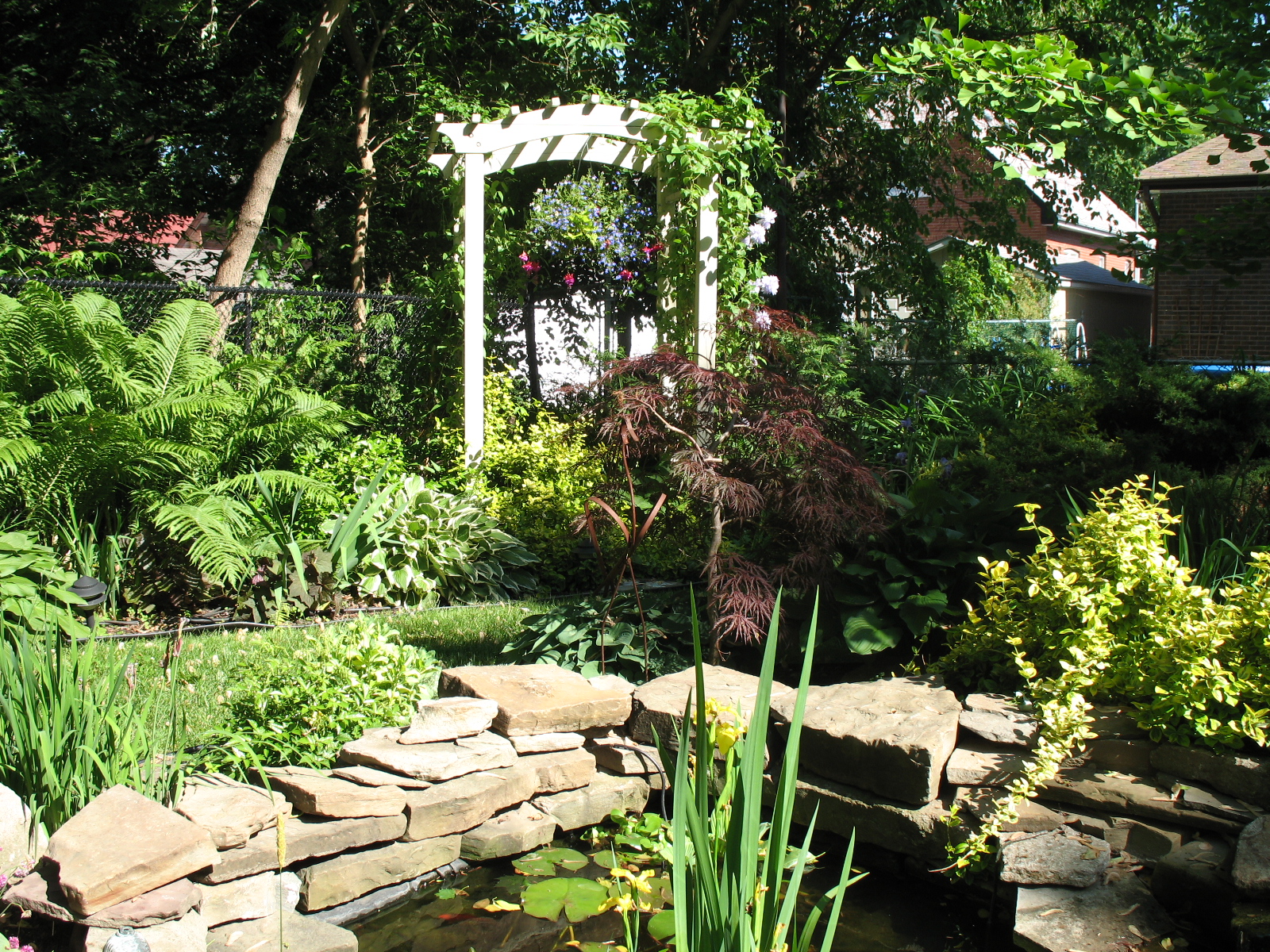
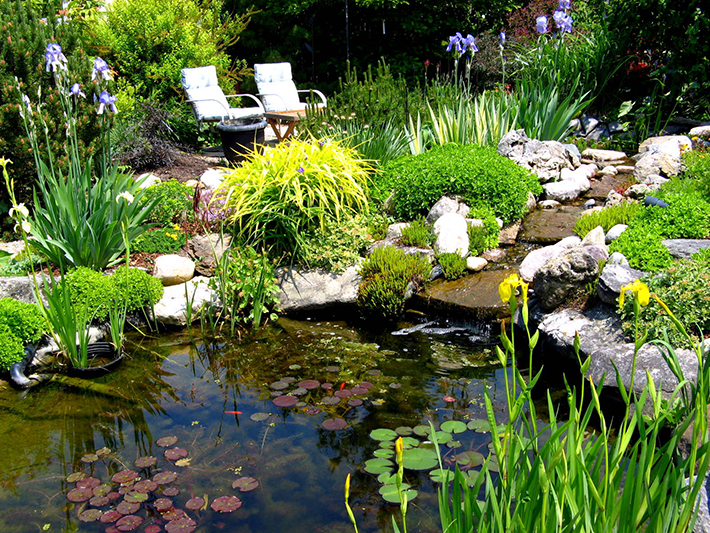
Elements
Any wildlife you wish to attract will require four basic elements:
- food
- water
- shelter
- space
Each plant and animal species has preferences, but with careful planning you can create a diverse habitat that will appeal to many species. By encouraging a variety of plant life in your yard, you encourage a variety of animal life.
Where to Start
Regardless of where you live, you can turn even the smallest yard into a wildlife haven with a little time and careful planning.
Planning your backyard habitat is key not only to ensuring the success of any vegetation that you may wish to plant, but also to providing habitat for a variety of species. It is generally helpful to begin by taking an inventory of what you already have.
Moving or pruning some existing vegetation may make a big difference. Keep in mind that wildlife considerations can be included in the design without sacrificing aesthetics.
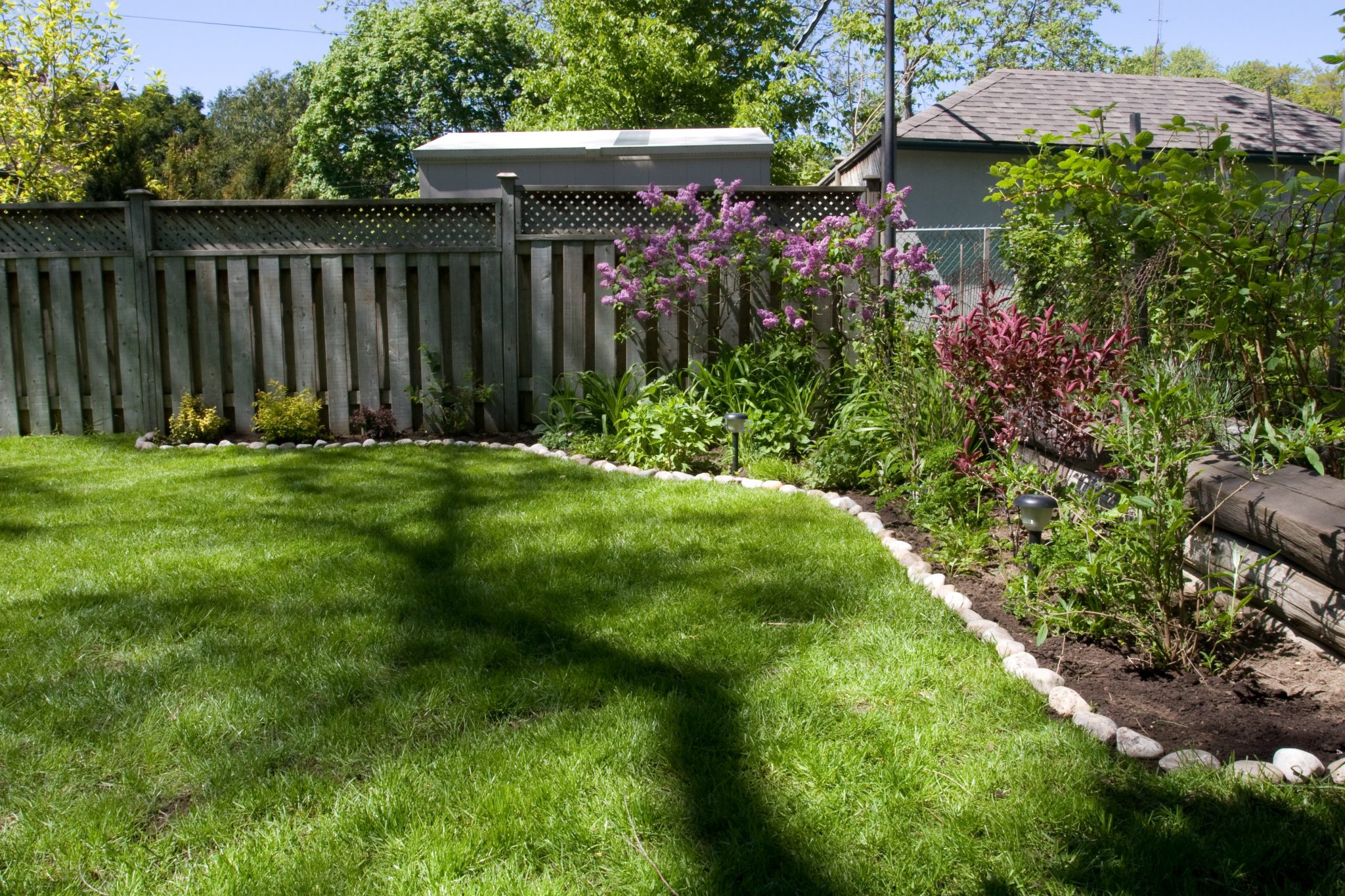
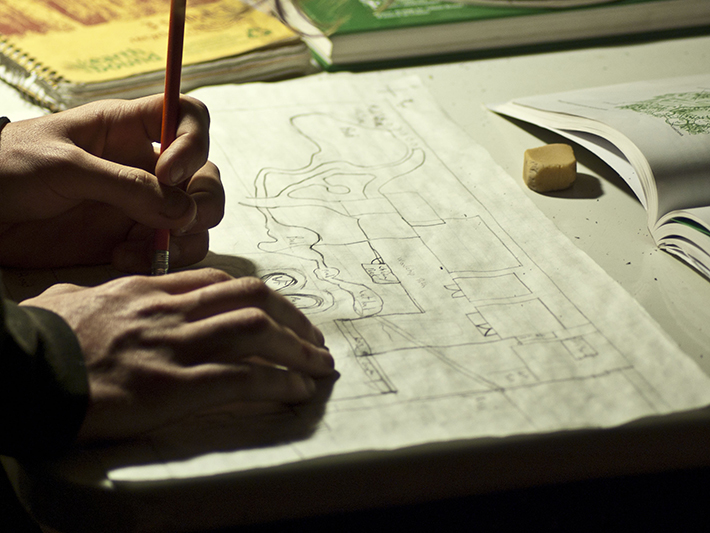
First Steps
- Mapping your yard to scale
- Mapping the location of your house and other structures, such as a pool or deck
- Plotting existing plantings
- Showing paths and patios
- Locating power lines, pipes and underground cables
Factors
The following should be taken into account to determine the species that are the best choices for your area:
- Size — height and spread of trees/shrubs, now and at maturity
- Soil — drainage/workability/fertility
- Sun — What areas receive sun or shade?
- View — Are there any views you want to maintain or hide?
- Seasons — What food/cover is available each season?
- Time and budget — How much time and money are you are willing to spend on your backyard habitat and to maintain it?
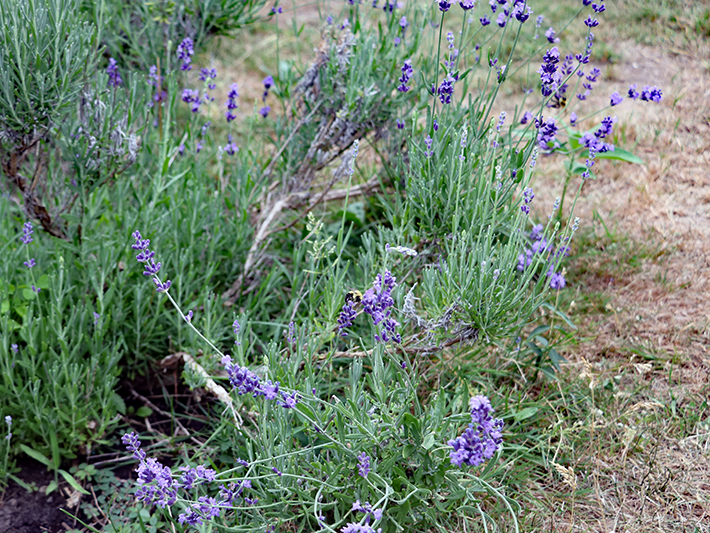
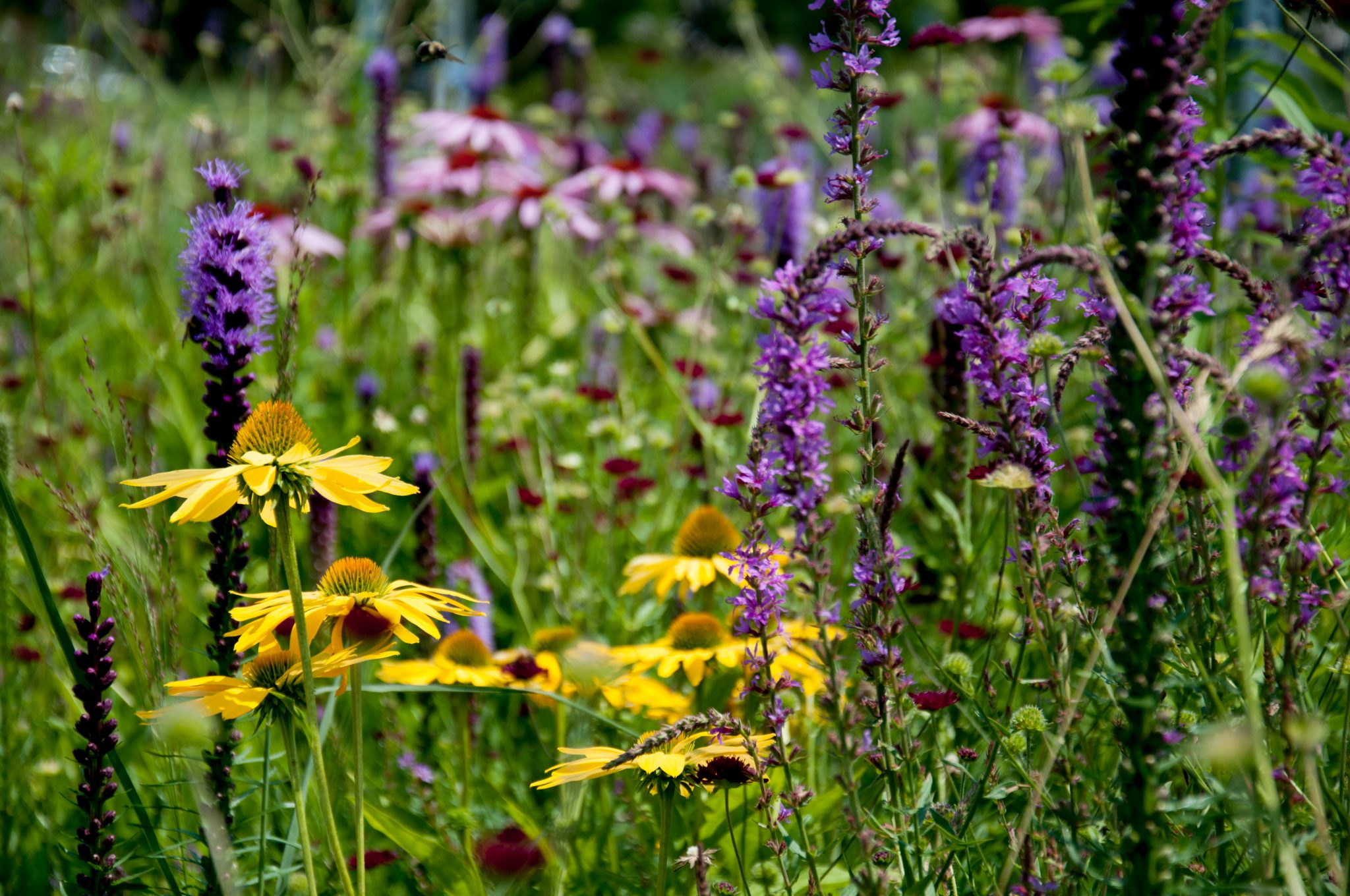
Design
How you arrange your plants is almost as important as what you plant. Wildlife tends to congregate where two different habitats meet. Therefore, design your yard to alternate plant masses with open areas. This will result in an edge effect, which encourages maximum species diversity.
Shrubs and trees should be planted in clumps or hedgerows to provide a dense habitat and protection for a variety of wildlife.
Shade
Consider planting deciduous trees on the south side of your house to provide shade in summer and allow sunlight through in winter. Such strategic planting of trees can provide a number of benefits over and above wildlife habitat— it can help to conserve energy in your home by reducing heating needs in winter and air conditioning needs in the summer.
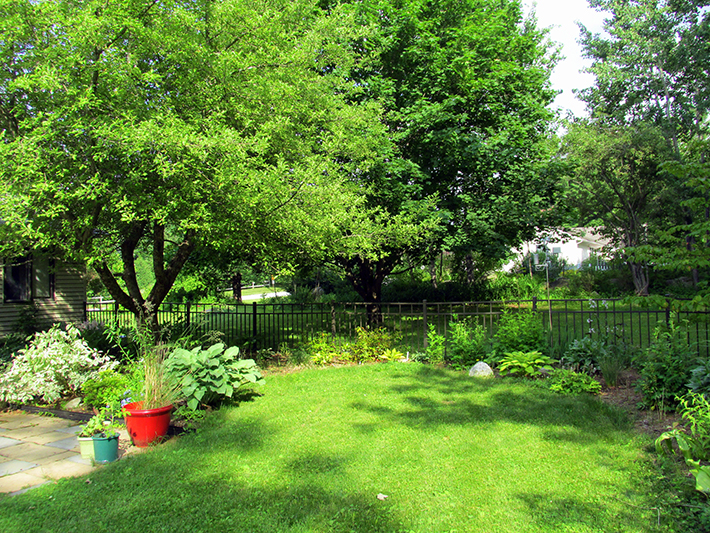
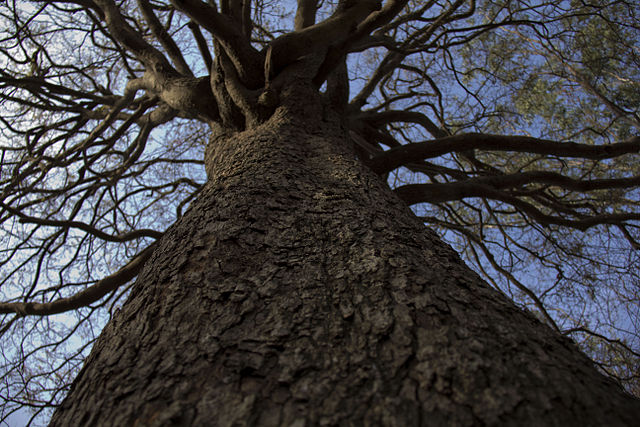
Benefits
Trees also help to slow climate change, not only by helping to reduce energy consumption of fossil fuels, but also by naturally absorbing carbon dioxide through the process of photosynthesis.
Consider where a shade tree would be appropriate or where large roots may damage existing structures. Plans for new plants should complement existing vegetation.
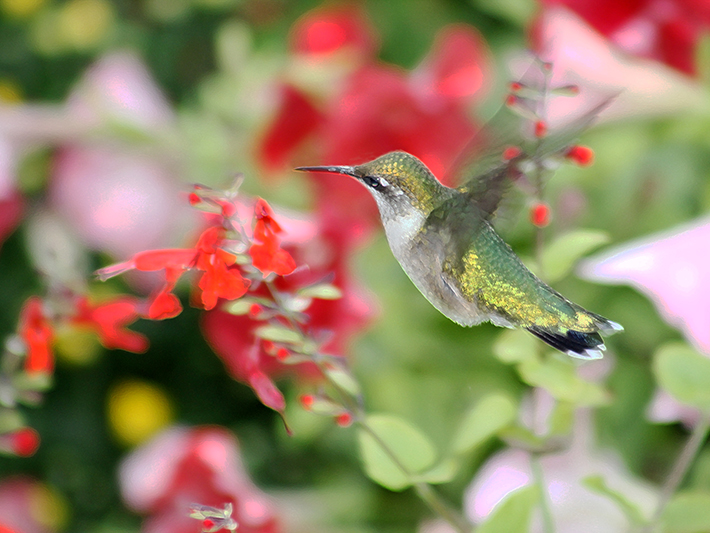
Purpose
The plants with which you choose to landscape your yard should provide food and shelter for a variety of animals. Try to select a variety, with different heights and characteristics (such as textures and colours).
Combining trees, shrubs, vines and herbaceous plants will increase the diversity of wildlife that is attracted to your yard. For instance, not all birds nest at the same level. Orioles and tanagers prefer tall trees, whereas thrashers and cardinals nest in shrubs, and sparrows like low-growing plants.
Native Plants
It is best to choose plants that are native to your area as they tend to be better adapted to the climate, soil conditions and local pests and diseases. As a result, they generally require less water and less tending, and do not depend on pesticides to thrive.
This is not always the case, however. A few exotic species, such as purple loosestrife, have adapted so well to our conditions that they are invading and threatening our native ecosystems— another reason to choose native species.

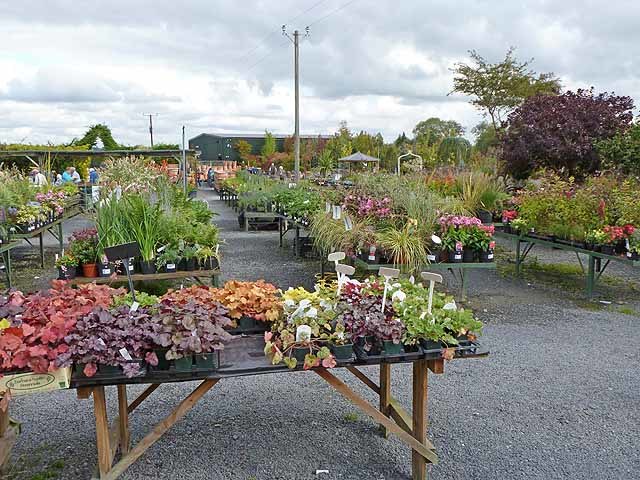
Advice
Consult your local nursery or garden centre, master gardener, horticultural society or naturalist club for advice on the best methods of soil preparation, the species that will thrive in your area and the spacing requirements for different plants. You may also be able to purchase seedlings, bedding plants and wildflower seeds from your nursery.
Before you buy, ask about the source of any plants, as removing plants from the wild disrupts native plant communities. Reputable dealers will be able to tell you where and how the plants were propagated. Source neonicotinoid-free plants that are truly bee and pollinator-friendly.
Permission
It is sometimes acceptable to remove wild plants from areas that are slated for development, such as subdivision, sewer and highway sites. However, proper permission must be obtained from the developers and/or property owners.
Always ask for permission before removing plants from private property
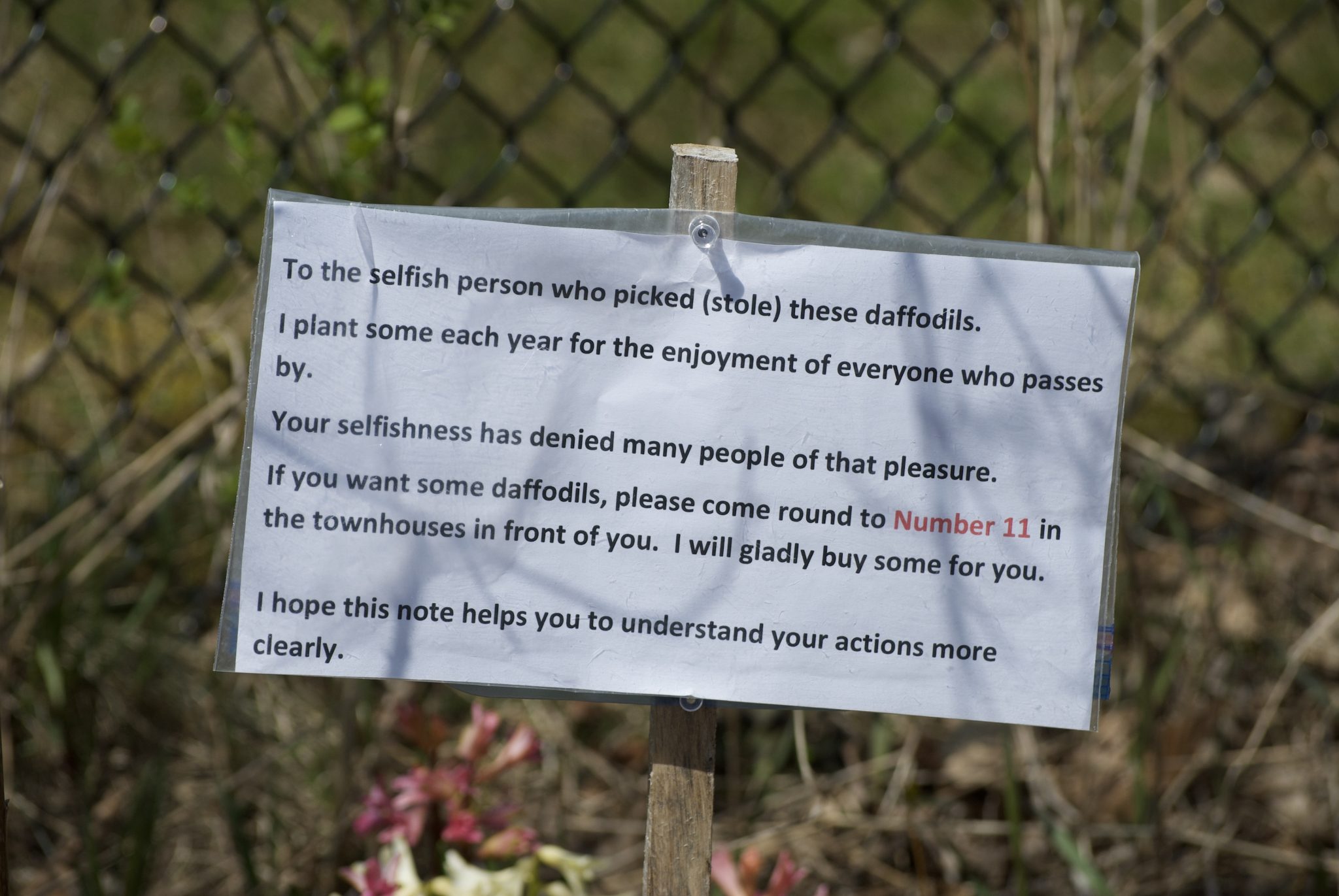
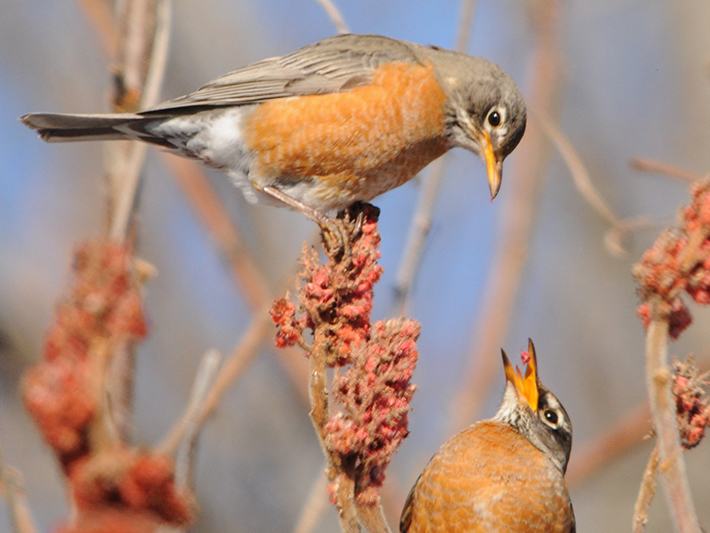
Food and Cover
Food and cover can be provided at a variety of levels by layering trees of different sizes, shrubs, vines and herbaceous plants. Within each category, there are certain considerations to remember.
Variety
- Mix perennials and annuals (perennials grow back each year to save you working on new plantings)
- Plant a variety of flowers that will bloom throughout the growing season
- Try some non-flowering plants, such as a fern and moss garden. Remember that these types of plants enjoy shady areas and damp conditions— in fact, moss requires water continuously to survive. If you are planning to put a pond in your yard, try planting ferns or moss around the edge
- You may choose to plant some edible species, such as ostrich fern or wild leeks, or plants that can be used as herbs or condiments, such as a mint or wild ginger
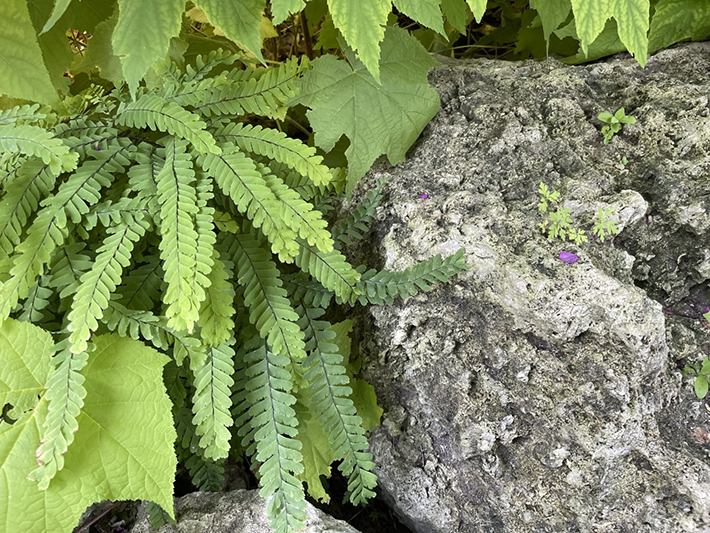
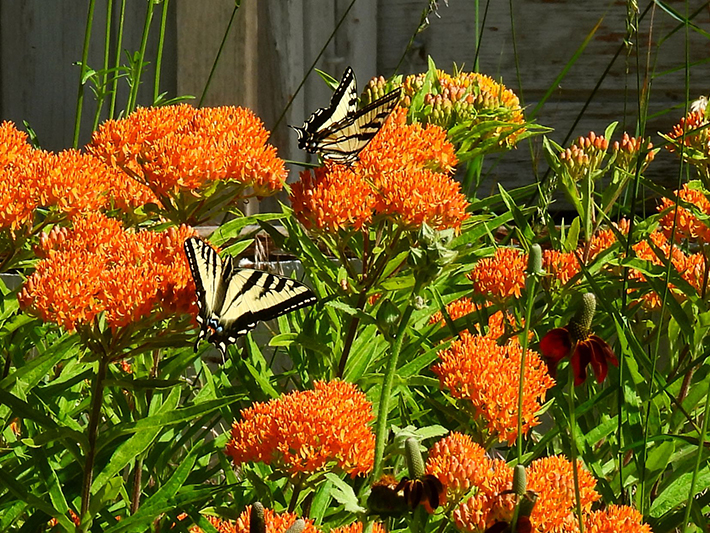
Wildlife
- Flowering plants should attract insects including butterflies and bees, as well as seed and nectar-eating birds
- A variety of colours will help to attract a variety of birds and insects (e.g., hummingbirds are attracted to reds and oranges)
- Some plants are important food sources for insect larvae, including caterpillars
Growth
- With some exceptions (e.g., sunflower), herbaceous plants generally grow close to ground
- Leave seed heads on plants for winter wildlife food
- Ground covers can be used to replace lawns
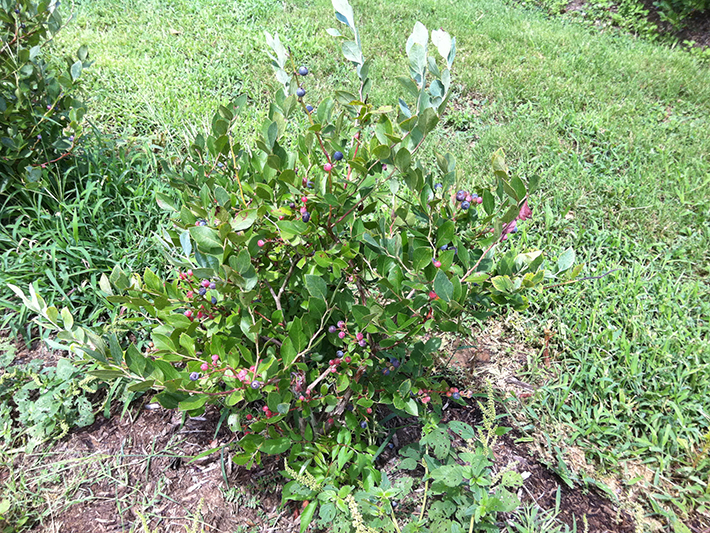
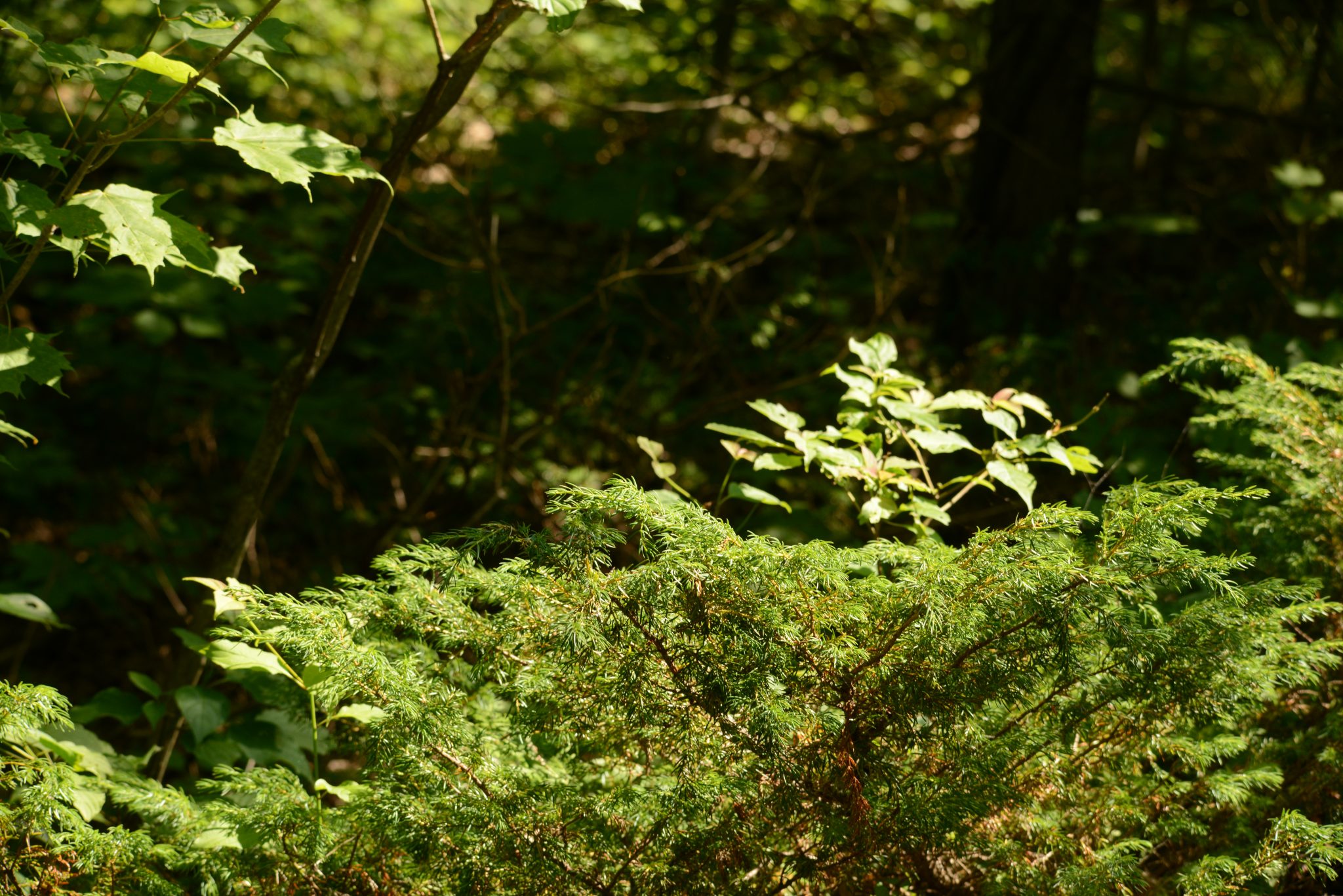
Variety
- Select shrubs with overlapping flowering times to provide fruit in as many seasons as possible
- For greater visual interest, select a variety of shrubs with different colours of bark, variegated leaves, etc.
Wildlife
- Dense shrubs provide food, nesting and cover for songbirds and small mammals
- Some species of shrubs are appropriate for hedgerows
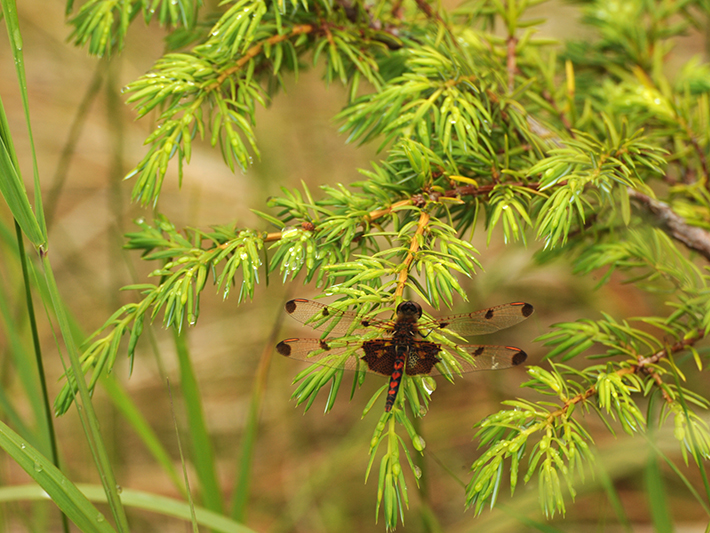
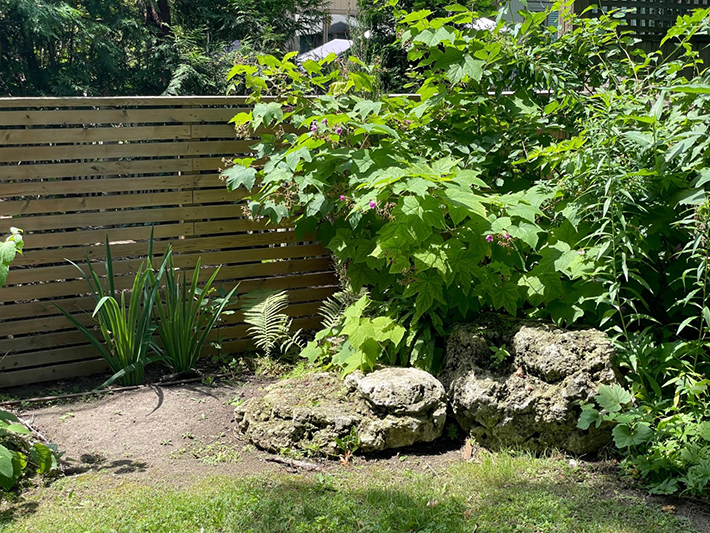
Growth
- Shrubs can sometimes grow in less than optimal growing conditions (sun or shade), but this may affect the degree of flowering and subsequently limit fruiting as well
- Shrub height ranges from 1 to 7 metres (3 to 20 ft.)
Variety
- Select both deciduous and coniferous trees— this will ensure year-round accommodation for wildlife
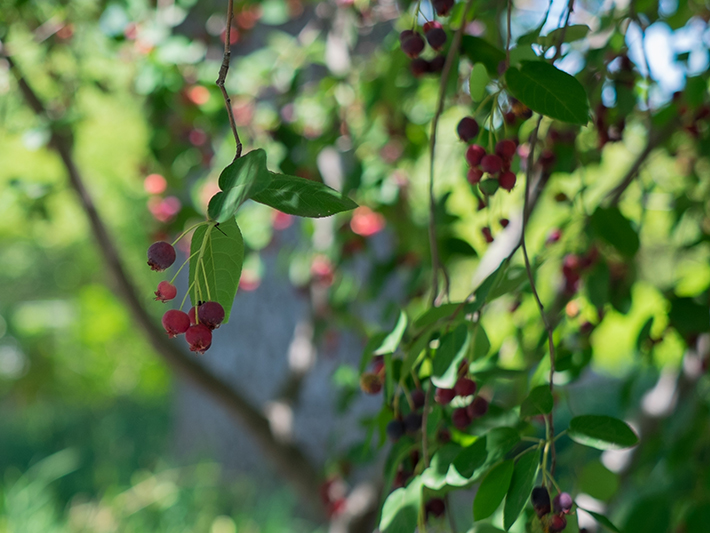
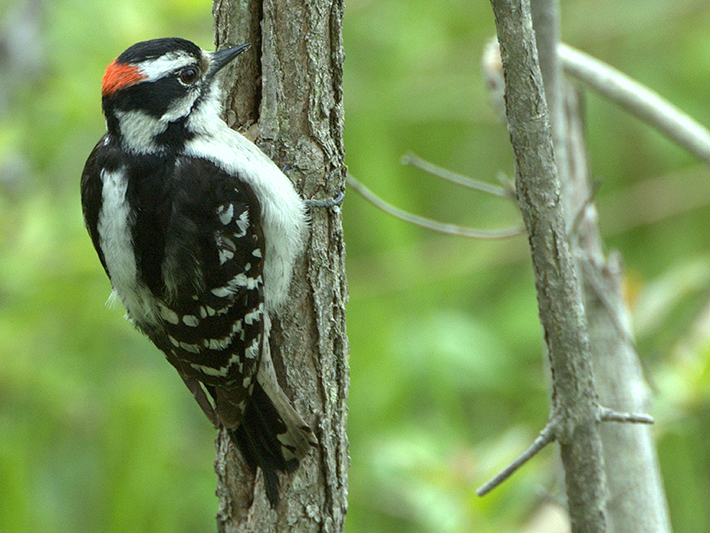
Wildlife
- Mature trees provide cover and nesting places for squirrels and many birds
- Tree and shrub bark and twigs are important winter food for deer, rabbits, bees, butterflies and beetles
Growth
- Trees grow slowly, but they can grow very large — allow space for spread
- Trees come in a wide range of shapes and sizes — choose a mix, and find the right balance for the size of your yard
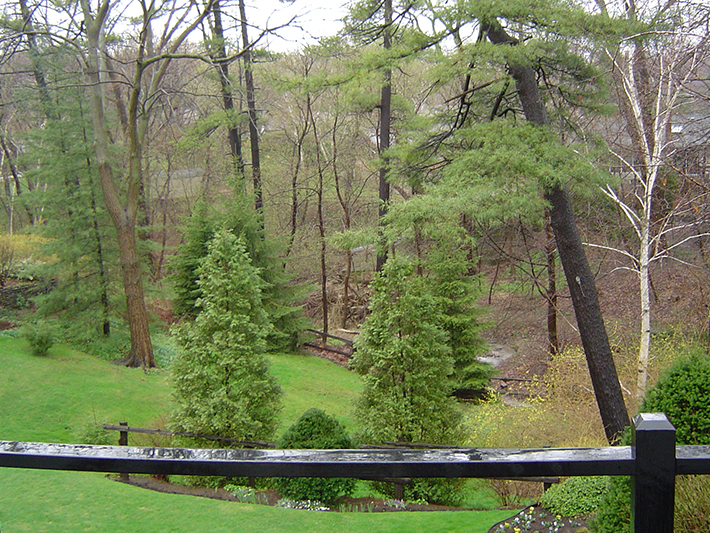
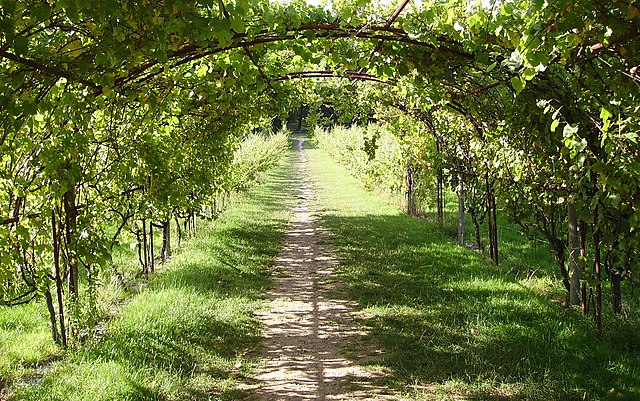
Variety
- Vines may be either ground cover or climbers
- Many species produce berries and are often visually attractive
Wildlife
- The dense foliage provided by vines gives exceptionally good cover for small birds
- Vine bark is often used by birds in nest construction
- The flowers and berries are a valuable source of food for birds and small mammals
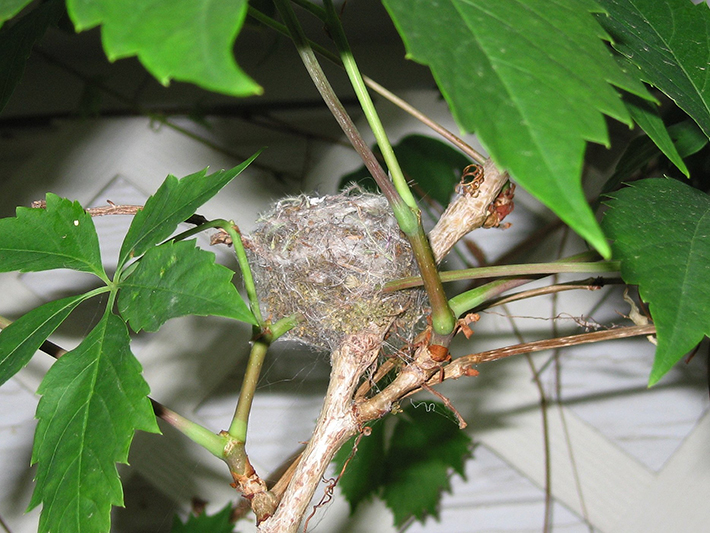
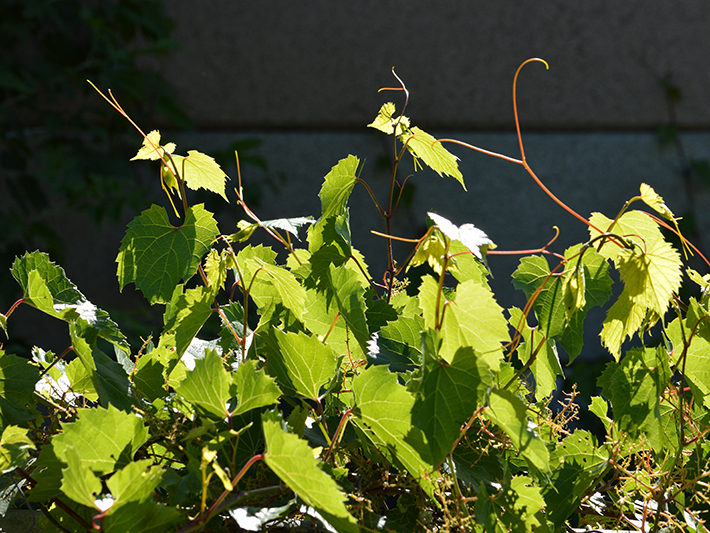
Growth
- Most vines like sun but can tolerate shade
- Vines can be used to hide an unwanted view (e.g. compost heaps)
- A variety of colours will help to attract a variety of birds and insects (e.g., hummingbirds are attracted to reds and oranges)
- Some plants are important food sources for insect larvae, including caterpillars
Diversity
You can attract a wider variety of wildlife to your yard by providing diversity — not only in plant types and height, but also in non-growing habitats.
Some species actually benefit from material you may consider waste, and the smallest yard can find room for a log pile. Indeed, brush, rocks, leaf litter, logs and even old Christmas trees may make your yard more attractive to some small birds, small mammals, snakes and toads.
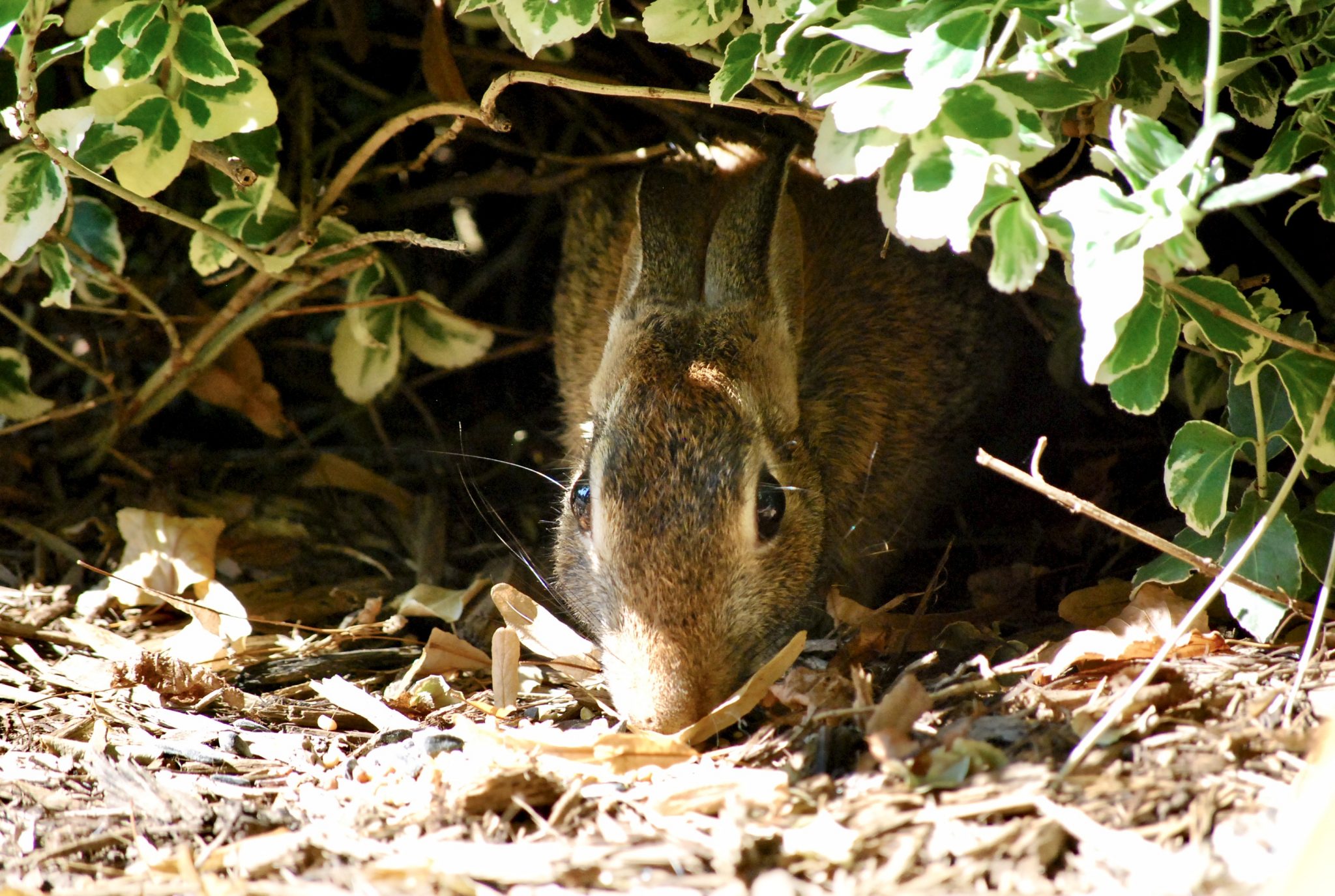
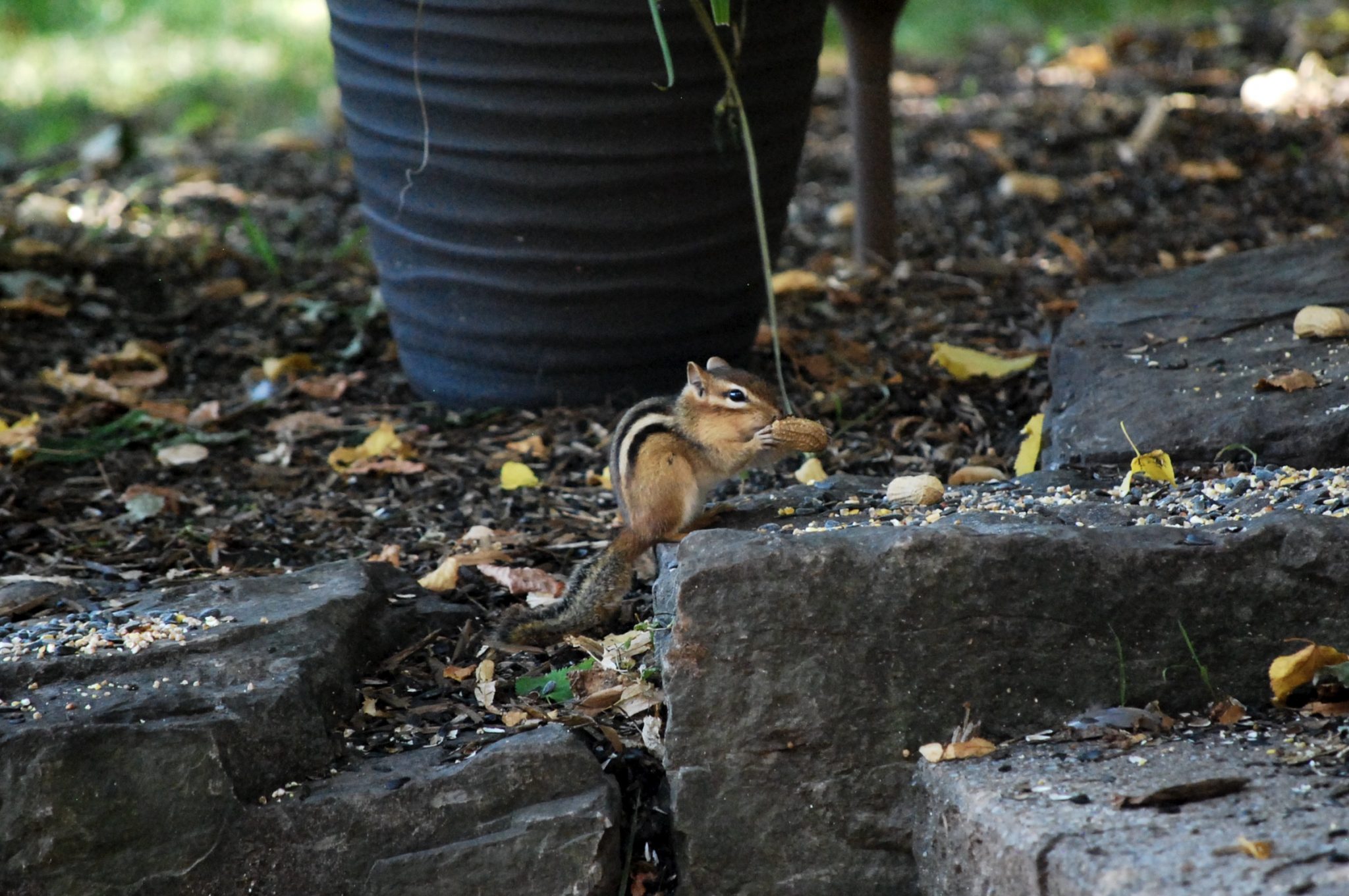
Stonepiles
Stonepiles provide cover for chipmunk, and serve as a “table” for wildlife to eat off of.
Logs and Stumps
Old logs or tree stumps may provide a nesting site for cavity-nesting birds and small mammals (house wrens, chickadees, nuthatches, woodpeckers and chipmunks), and a food source for certain insects, as well as woodpeckers, nuthatches and creepers and other birds that feed on those insects
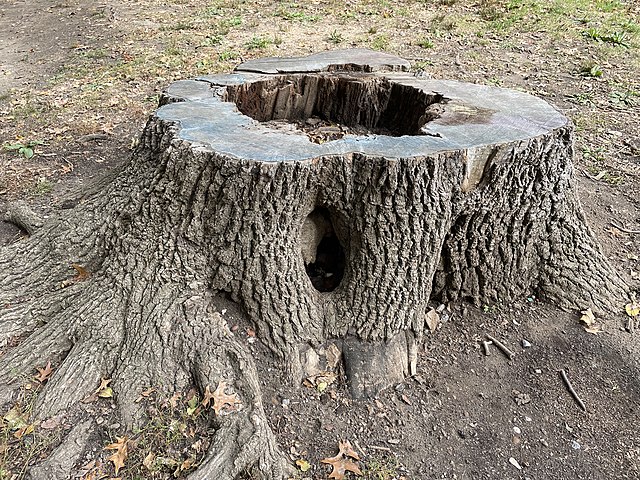
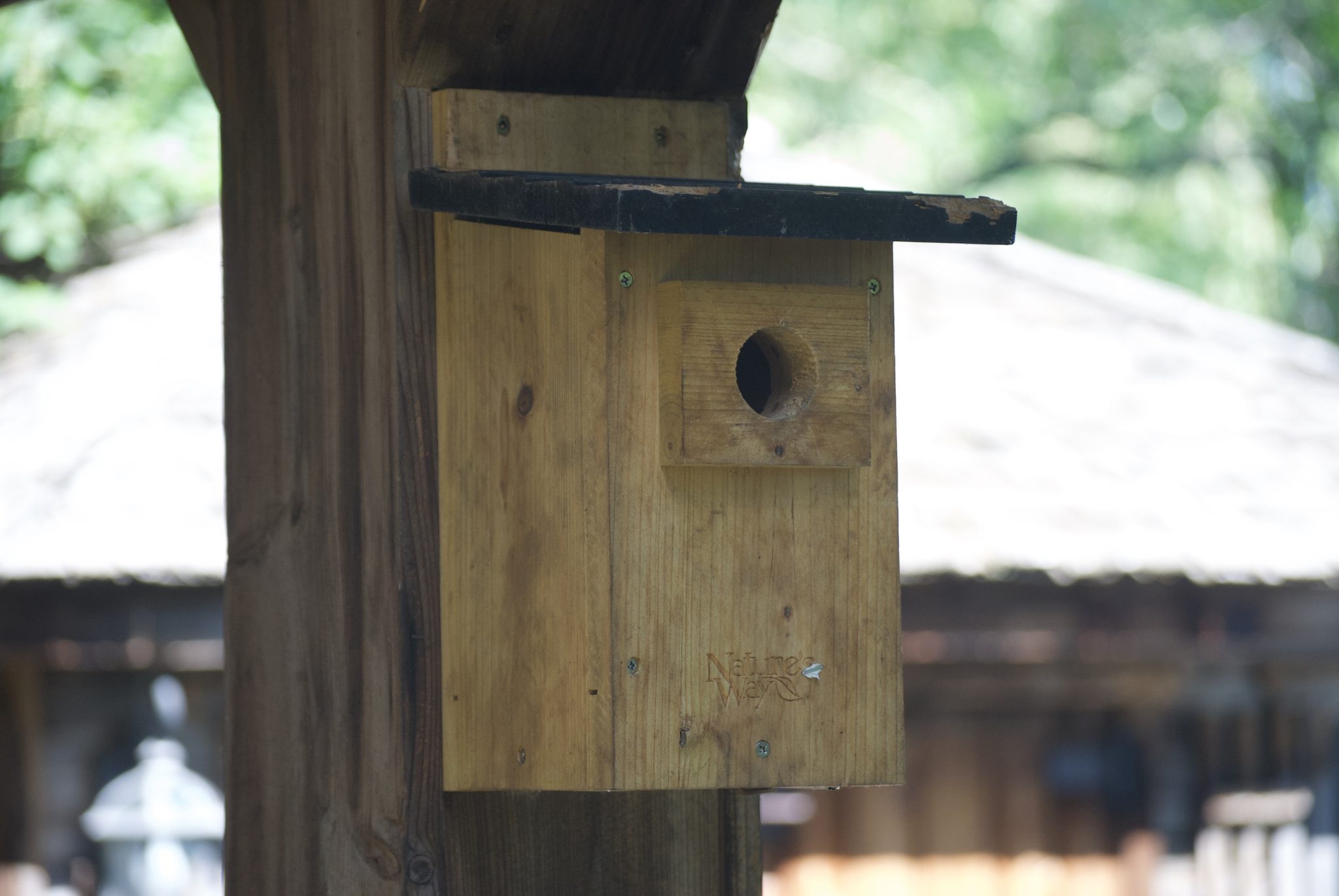
Nesting Boxes
Nesting boxes (birdhouses) will attract many birds that would choose a hole in a tree as a nest site. But each species requires a house of certain dimensions and a specific location. If you are planning to install a nesting box, be sure to build and situate it in a way that is appropriate for the birds you particularly wish to attract.
Nesting boxes are also available for squirrel, bat, mice and butterfly hibernation boxes. It is important to remember to clean and maintain the nesting boxes regularly.
Feeders
Bird feeders help to supplement natural food sources in the winter. Establish your feeding station in the fall and maintain it until April, when natural food sources are more plentiful. Locate feeders in an open space (so that predators, such as cats, can be detected) with cover or perching places available within a distance of approximately 3 metres (10 ft.).
Squirrels, chipmunks, and other small mammals will also use feeders; in fact special feeders can be designed specifically for them
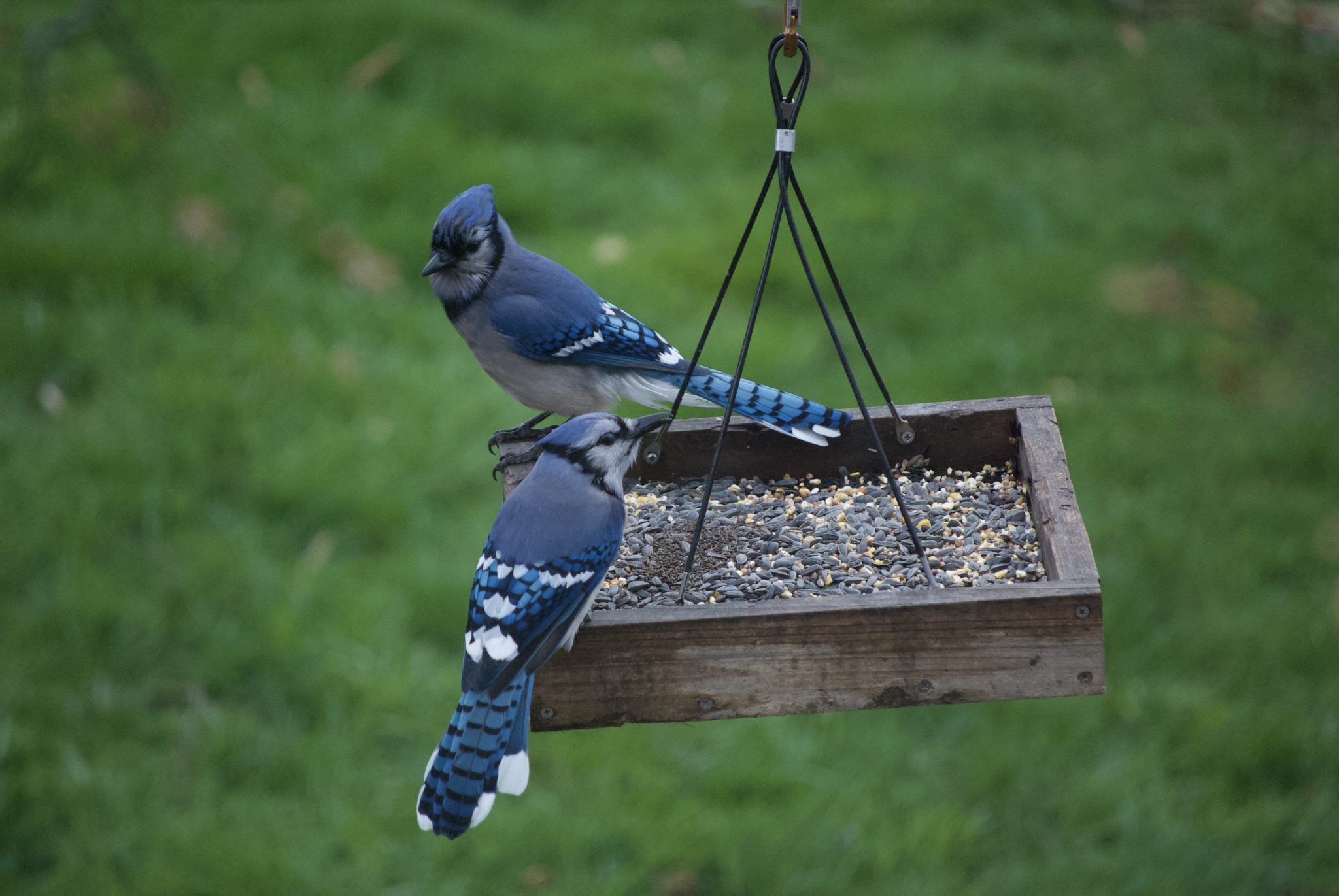
Maintenance
Once your yard is planted and growing, you are ready for enjoyment and maintenance. Maintenance of woody plants generally means removing dead, diseased or damaged branches and plants. Perennial herbaceous plants should have last year’s flower stalks removed once new shoots appear.
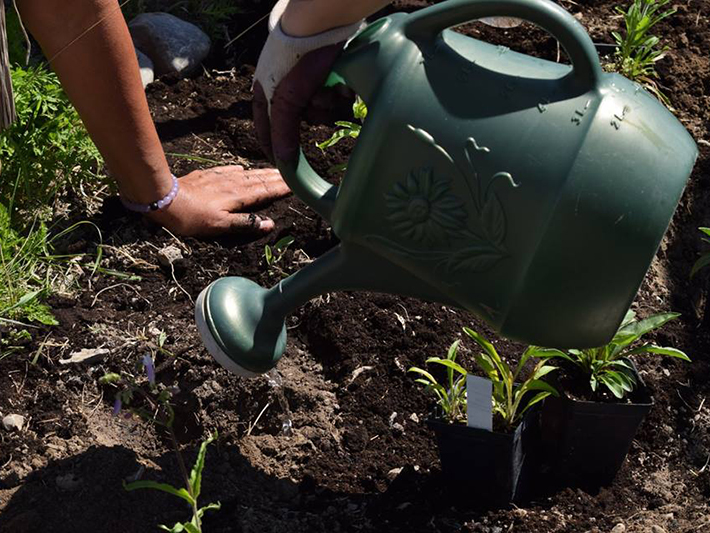
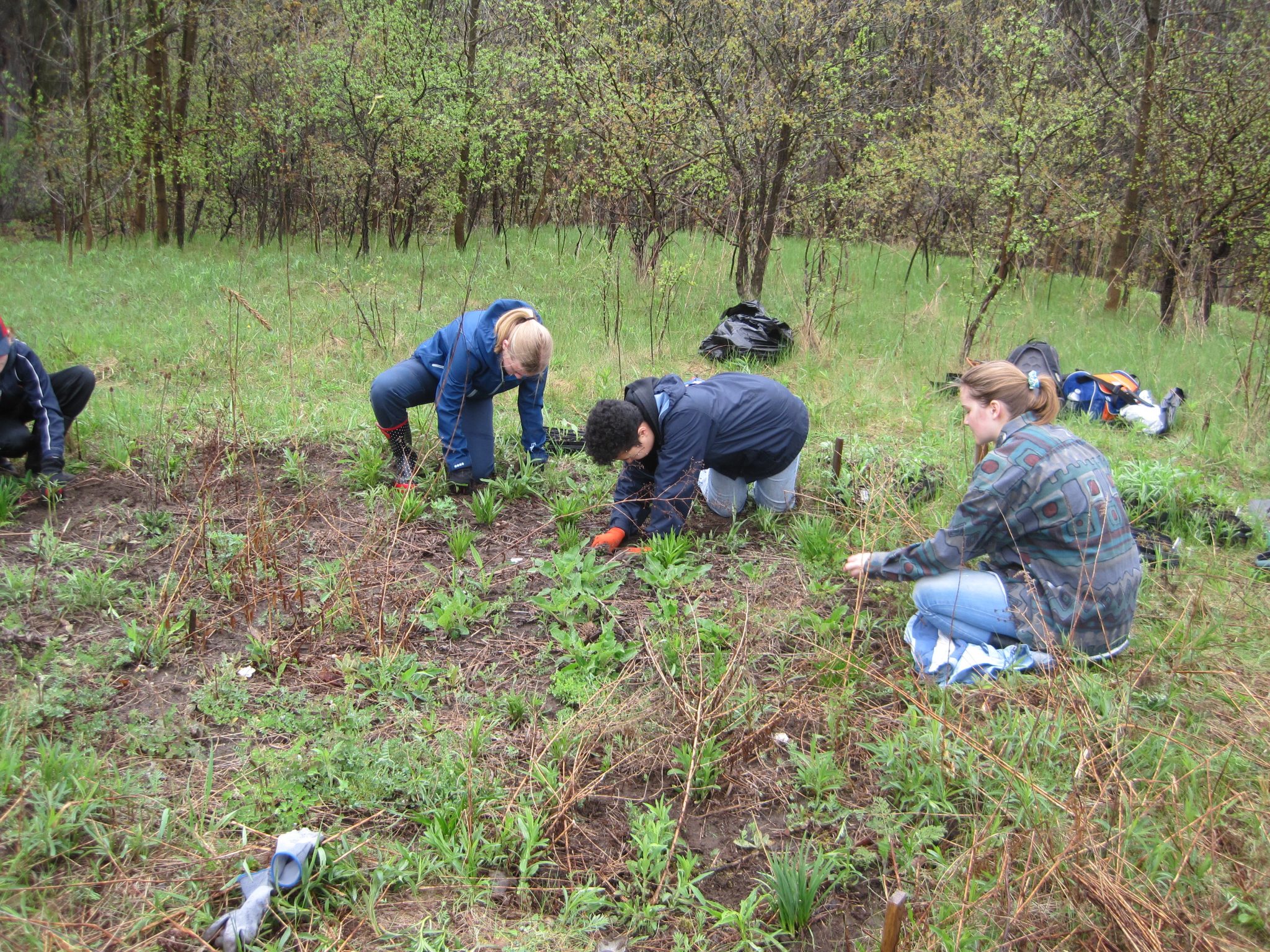
Weeding
Annual plants may reseed themselves for several years, depending upon the species.
Your backyard habitat will require a fair amount of maintenance and weeding through the first few years, until it is established.
Weeding is an essential part of maintaining your yard.
Pest Control
Try to use natural methods such as companion planting, or homemade mixtures such as soapy water with strong smelling plants (onions, hot peppers) added to scare off pest insects. This will help to maintain a safe environment not only for your wildlife guests but for you as well.
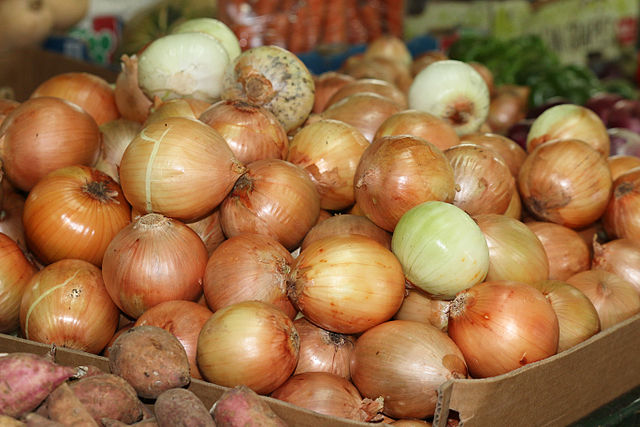
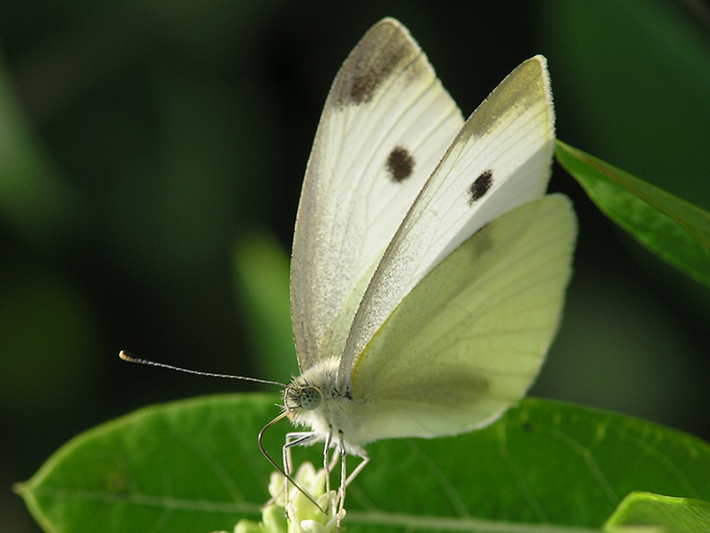
Unwanted Guests
Remember, you have planted this yard for wildlife and even guests that you have traditionally considered to be unwelcome may now be attracted to it.
As your backyard habitat progresses, a natural balance that keeps these species in check should be restored.
Composting
Try composting as an alternative to synthetic fertilizers. Composters can often be purchased for a reduced rate through municipalities. Check to see if this is the case in your area. Or you can build your own compost bin to suit your particular needs.
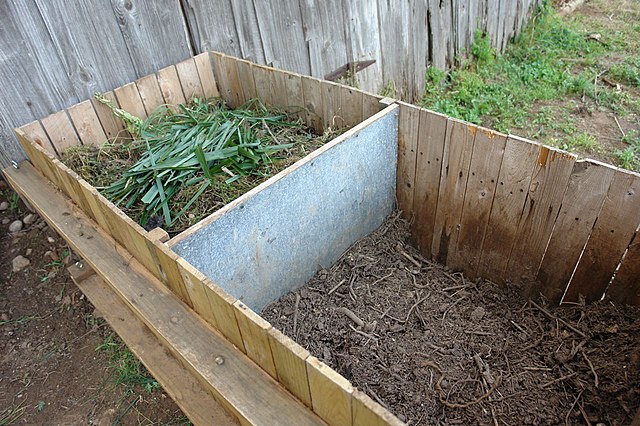
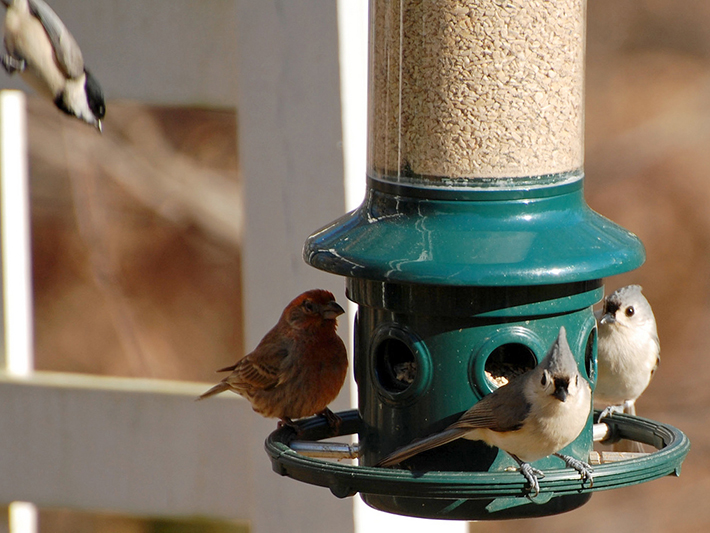
Cleaning
Remember to clean and maintain your bird feeders, bird baths and habitat boxes. Use a bleach-based solution. Be sure to wash your hands thoroughly after handling feeders.
Bird Baths
Bird baths are often favoured as a source of water since the height usually allows birds to have a view of predators. Even so, the bird bath should be located in an open space with cover available within approximately 3 metres (10 ft.).
Choose a bird bath with a rough surface that will enable birds to perch securely on the sloping sides. You may wish to consider arranging for dripping or running water, as this will attract an even wider variety of birds.
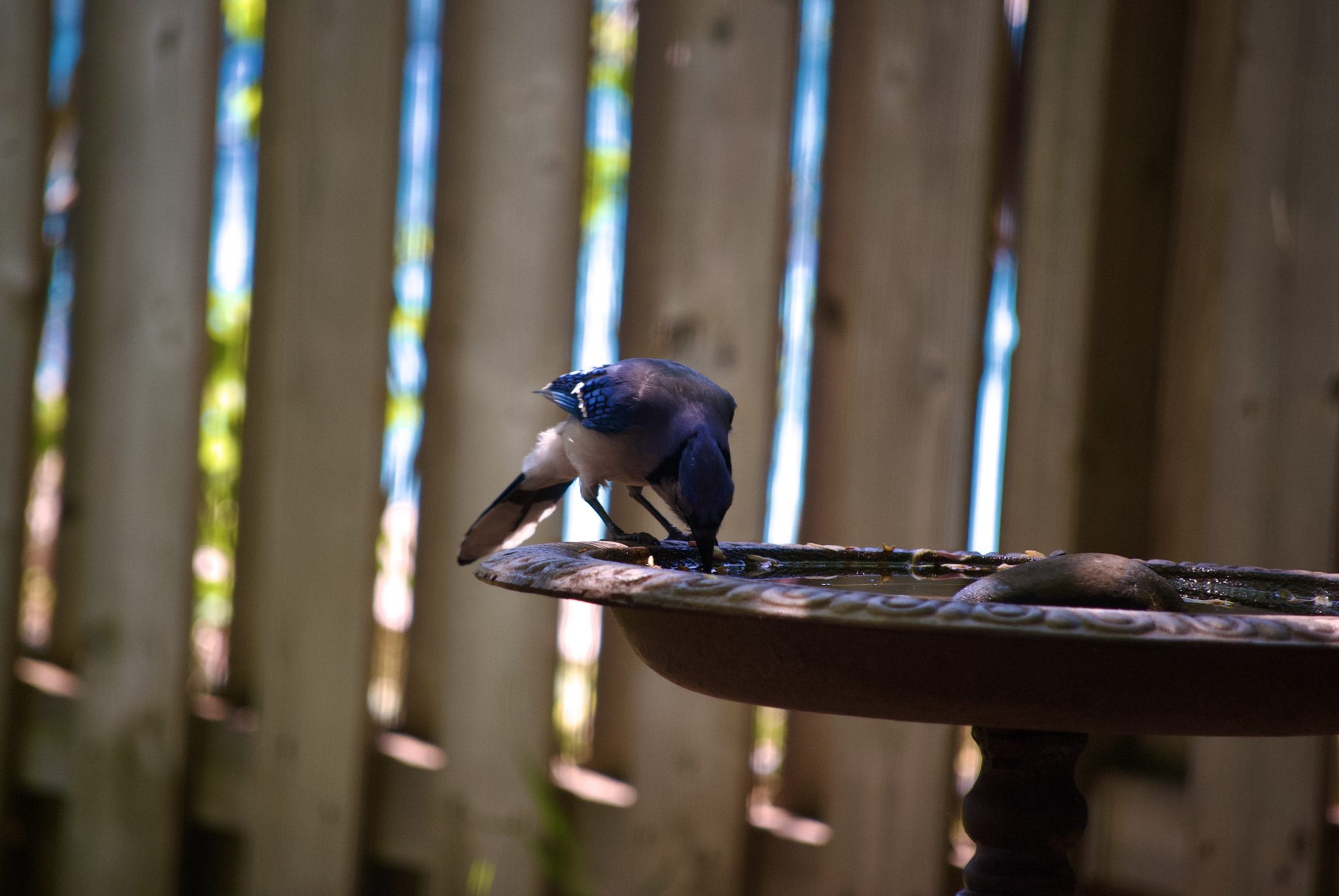
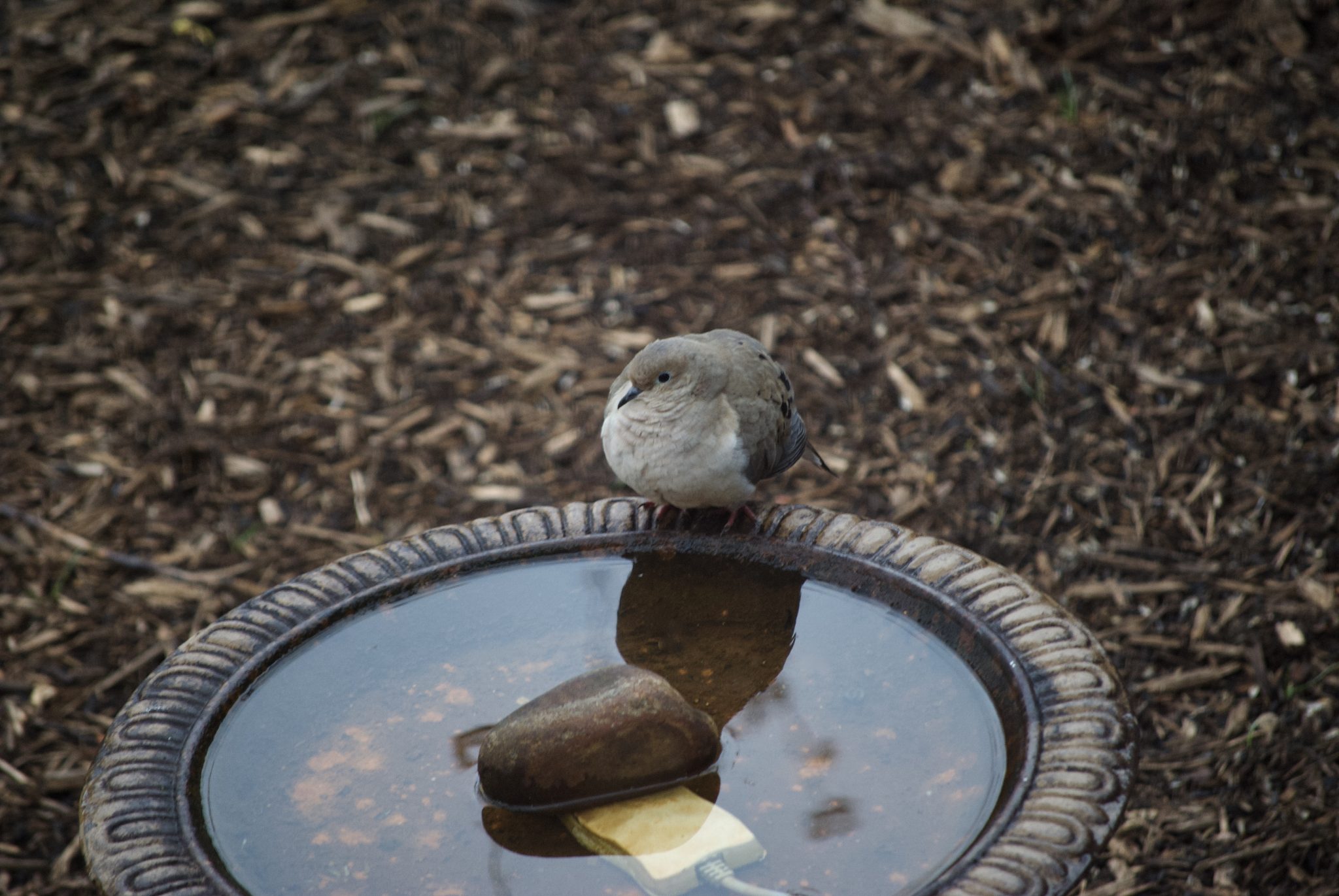
Birdbaths in Winter
You may also want to provide water for birds during the winter. Electric immersion style heaters and bird bath top replacements with built-in heaters are available to prevent the bath from freezing. If you do keep your bird bath going throughout the winter, don’t forget that you have to clean it, just as you do during the summer.
Water Dishes
A simple pan on the ground can be an effective and affordable way to provide water for birds, and it may serve other forms of wildlife unable to reach an elevated bath. Like the bird bath it should be located in an open space for easy detection of predators and have a rough edge for footing.
The maximum depth should be 8 cm (3 in.). The water dish has the same freezing and cleaning drawbacks as the bird bath does in winter.
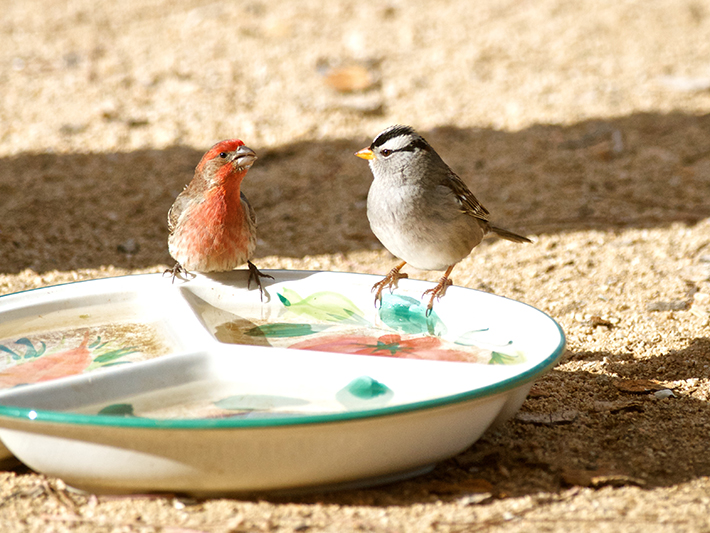
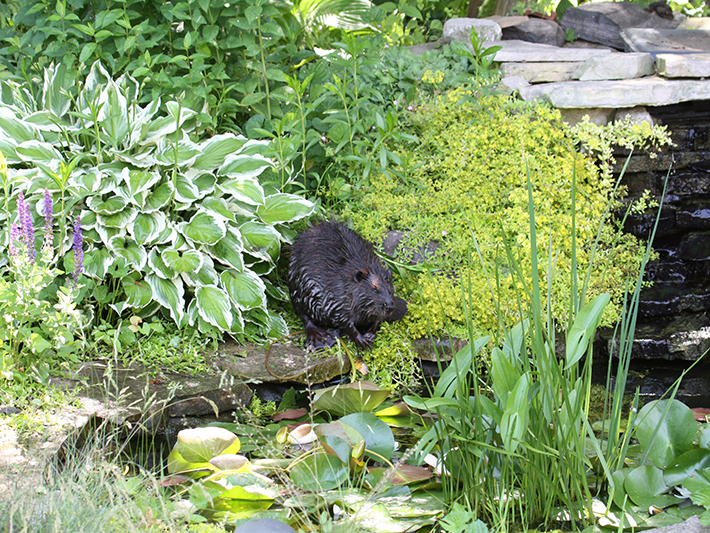
Ponds
You may wish to create a pond that will attract its own unique range of wildlife, such as raccoons, bats, frogs, toads and insects. Contrary to what you might think, the tiniest of lots can accommodate a pond, or even a wetland. Some research is necessary in planning your pond or wetland, however, as it must be designed and built specifically for the wildlife that you wish to attract. There are a number of cost-effective ways to install a pond in your yard — old waterbed mattresses, for example, make great pond liners!
Fulfillment
Your backyard habitat should offer you great joy and entertainment, while providing a safe and pleasant environment for wildlife.
If you’ve started small, that’s great! Every bit of natural habitat helps, and you will be less likely to get discouraged about the work you have ahead.
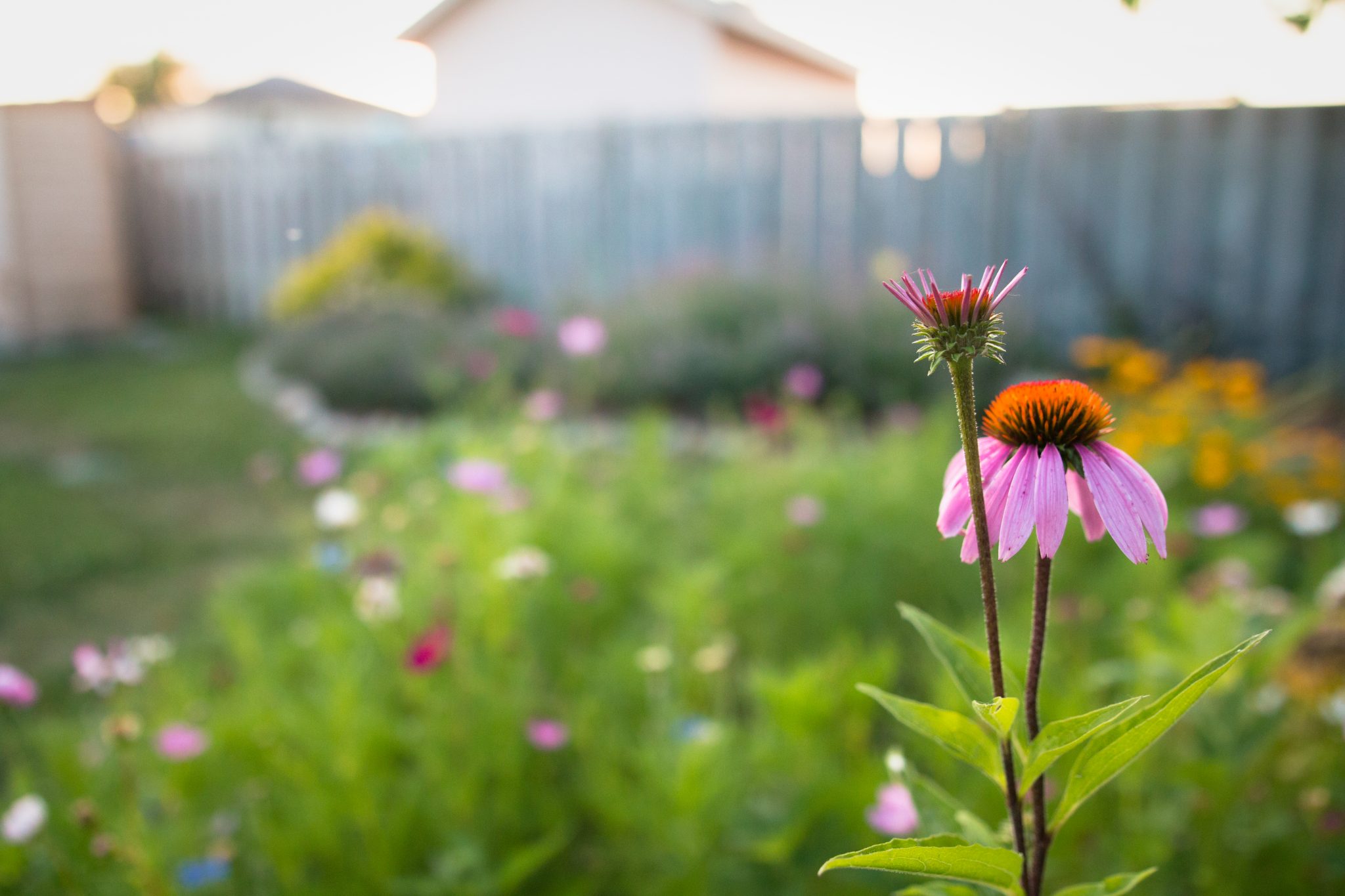
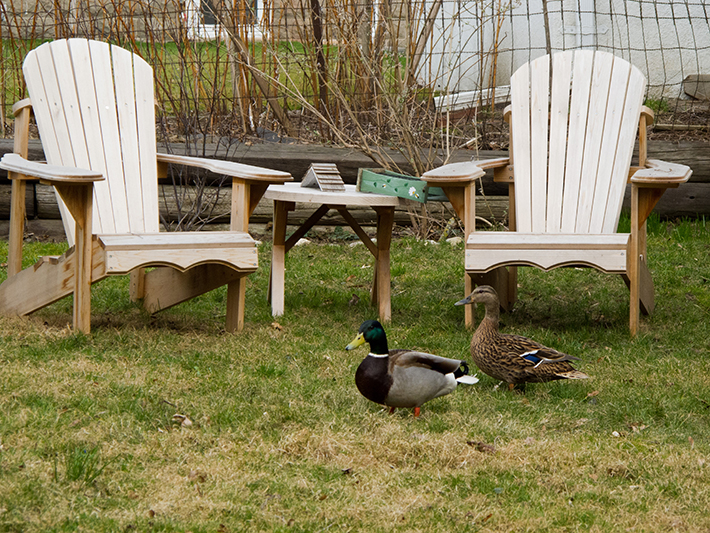
Spread the Word
As your backyard habitat progresses, don’t forget to record your wildlife sightings and the growth of the vegetation in journals and photographs. Share your ideas, information and enthusiasm with a neighbour— adjoining yards can provide a larger and more diverse environment in which to attract wildlife.
Some areas have started “green-up” projects that encourage entire neighbourhoods to participate in naturalization projects to create wildlife corridors.
Long Term
Your backyard habitat is likely to be much easier to maintain than a traditional yard of grass and exotic plant species.
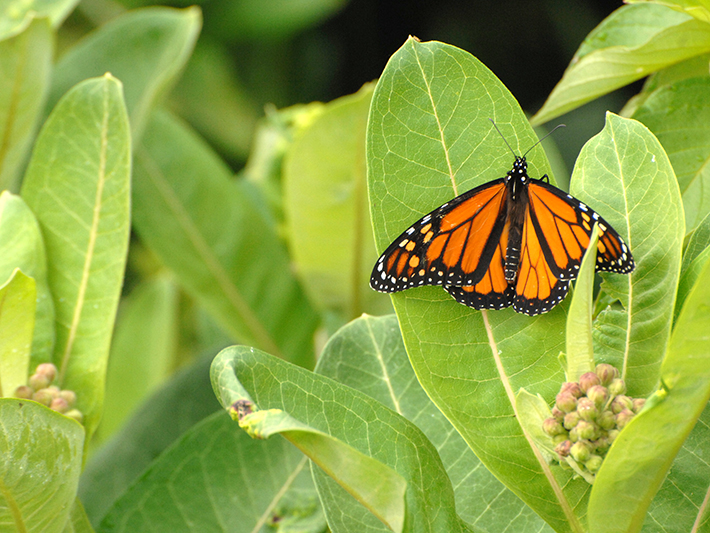
ON Nature Magazine Resources
Ontario Nature Blog Resources
Books
- Attracting Backyard Wildlife – A Guide for Nature Lovers by Bill Merilees. Vancouver/Toronto: Whitecap Books, 1993.
- Backyard Habitat for Canadian Wildlife by Canadian Wildlife Federation. 1996
- Bird Houses – Feeders You Can Make by Hi Sibley. Chicago: The Goodheart-Wilcox Co. Inc., 1991.
- Butterfly Gardening – Creating Summer Magic in Your Garden by Xeres Society. Whitecap Books, Whitecap Books, 1990.
- Landscaping With Nature – Using Nature’s Designs to Plan Your Yard by Jeff Cox. Emmaus Pennsylvania: Rodale Press, 1991.
- The Butterfly Book – An Easy Guide to Butterfly Gardening, Identification and Behavior by Donald and Lilian Stokes and E. Williams, Boston, Little, Brown, 1991.
- The Ontario Naturalized Garden by Lorraine Johnson. Whitecap Books, 1995.
- The Natural History of Wild Shrubs and Vines by Donald W. Stokes (illustrated by Deborah Price Smith). The Globe Pequot Press, 1989.
- The Naturalists Garden by Ruth Shaw Ernst (illustrated by Robin Brickman), Globe Pequot Press, 1996.

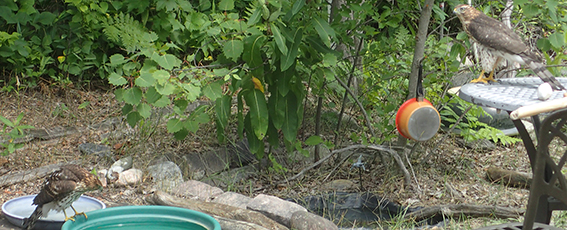
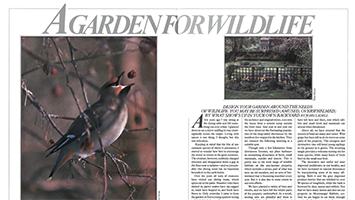

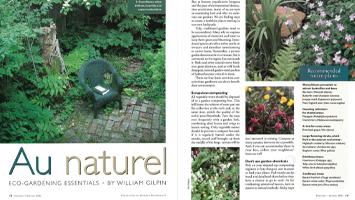
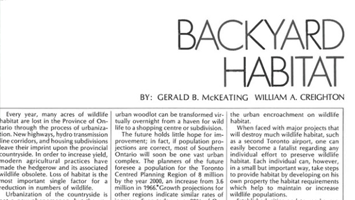
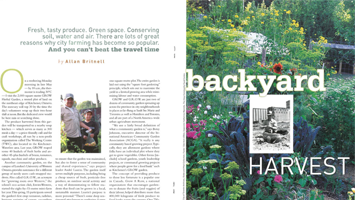
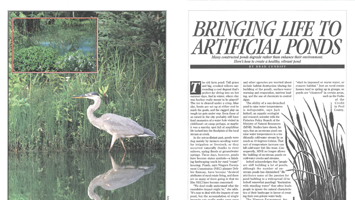
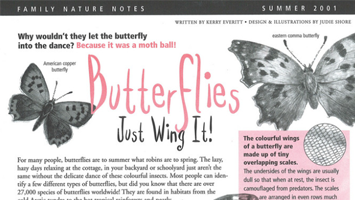
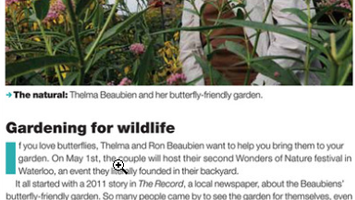
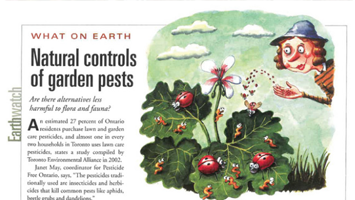
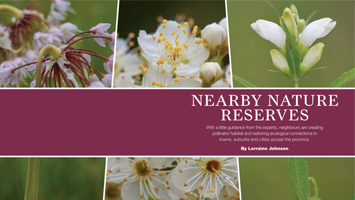
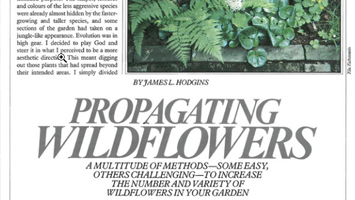
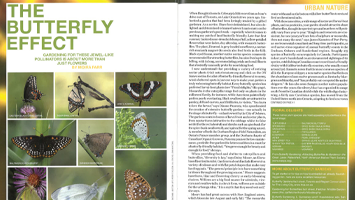
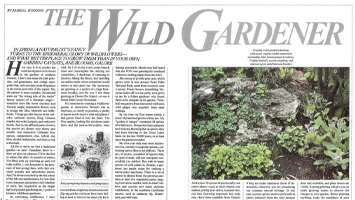
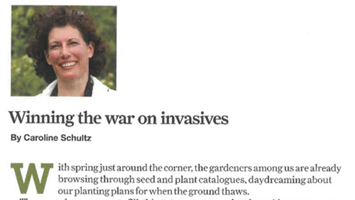
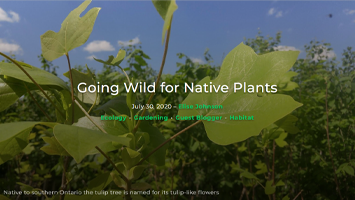
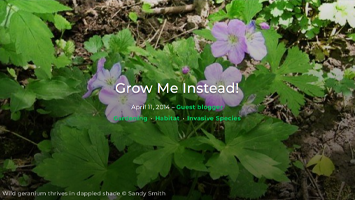
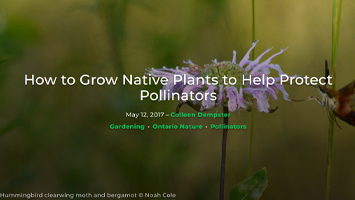
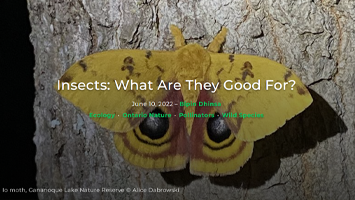
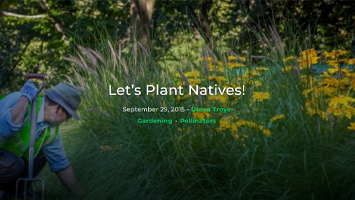
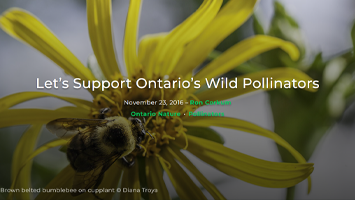
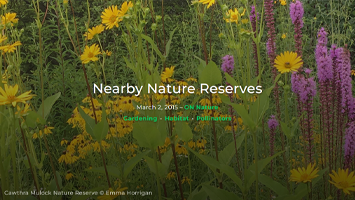
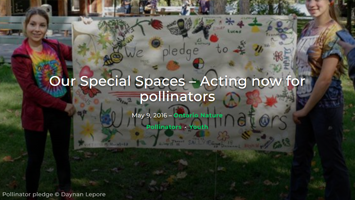
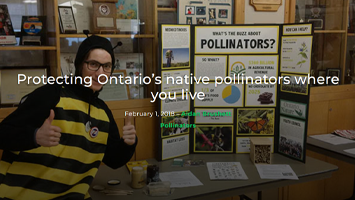

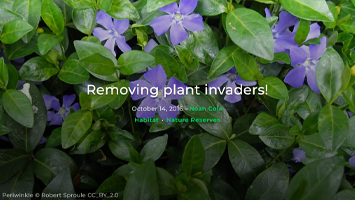

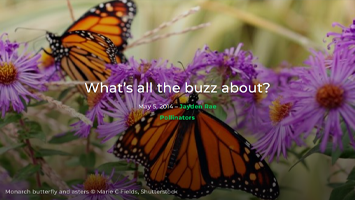
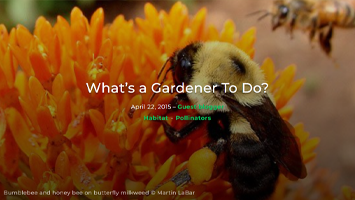

No Comments Yet